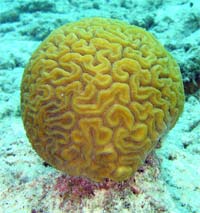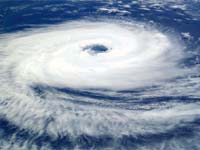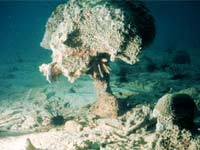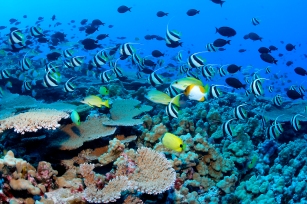Biologists fear that the world’s beautiful coral reefs may be early victims of climate change, succumbing to the increasing acidity of the planet’s oceans. But new research provides a small glimmer of hope, by showing that corals may be able to weather the upcoming storm by shifting to a temporary soft-bodied lifestyle.
Climate change is not just about surface warming and glacial melting. The carbon dioxide that human activity is pumping into the atmosphere also dissolves in the world’s oceans, slowly increasing their acidity over time. And that spells trouble for corals.

Corals may seem like immobile rock, but these hard fortresses are home to soft-bodied animals. These creatures – the coral polyps – build their mighty reefs of calcium carbonate using carbonate ions drawn from the surrounding water.
But as the water’s pH levels fall, these ions become depleted and the corals start to run out of their chemical mortar. The upshot is that in acid water, corals find it hard to build their homes.
Scientists have predicted that if carbon dioxide levels double, the reef-building powers of the world’s corals could fall by up to 80%. If they can’t rebuild quickly enough to match natural processes of decay and erosion, the reefs will start to vanish.
Now, Maoz Fine and Dan Tchernov from the Interuniversity Institute of Marine Science, Israel, have found that they have a way of coping with homelessness.
They grew some fragments form two European coral species under normal Mediterrenean conditions, and others in water slightly more acidic, by a mere 0.7 pH units.
 Those that spent a month in the acidic tank were quickly transformed. The skeleton dissolved and the colony split apart. The exposed and solitary polyps, looking like little sea anemones, still remained attached to rocky surfaces. When the going gets tough, the tough clearly go soft.
Those that spent a month in the acidic tank were quickly transformed. The skeleton dissolved and the colony split apart. The exposed and solitary polyps, looking like little sea anemones, still remained attached to rocky surfaces. When the going gets tough, the tough clearly go soft.
Even without their protective skeletons, they survived for over a year and seemed to be going about business as usual. They thrived, they reproduced normally and they still kept the symbiotic algae that allow them to produce energy through photosynthesis.
And when they were put back in normal conditions, they readily gave up their independence and re-formed both colonies and hard shells.
Fine and Tchernov’s findings suggest that corals may be able to survive upcoming climate changes by adopting soft-bodied, free-living lifestyles. And there is evidence that they have used this trick before.
 The hard shells of coral reefs fossilise easily, but the fossil record still has large gaps where no reefs are found. These may represent periods of time when corals were biding their time in their soft-bodied phase instead.
The hard shells of coral reefs fossilise easily, but the fossil record still has large gaps where no reefs are found. These may represent periods of time when corals were biding their time in their soft-bodied phase instead.
But while this new discovery is cause for hope, it should not be cause for complacency. Even though the corals themselves may persist in another guise, the vast diversity of species that depend on them may go for good if their reefs disappear.
More about corals:
Bleached corals recover in the wake of hurricanes
Hope for corals – swapping algae improves tolerance to global warming
More about the effects of climate change:
Icebergs are hotspots for life
When the heat is on, male dragons become female
Climate change responsible for decline of Costa Rican amphibians and reptiles
Reference: Fine and Tchenov. 2007. Scleractinian coral species survive and recover from decalcification. Science 315: 1811.
Technorati Tags: corals, climate+change, environment, science, coral+reefs, ocean+acidication, science,
Filed under: Animal behaviour, Animal kingdom, Climate change, Conservation, Corals, Environment, Invertebrates, Underwater world | Comments Off on Corals survive acid oceans by switching to soft-bodied mode












 Corals are hugely successful animals. Their reefs have endured across millions of years and today, they cover an area of 280,000 square kilometres, larger than the entire United Kingdom. Their success depends on a partnership with a group of algae called zooxanthellae. Over a million of these lodgers can live in a single cubic centimetre of coral, and they provide their landlords with both colour and energy through photosynthesis.
Corals are hugely successful animals. Their reefs have endured across millions of years and today, they cover an area of 280,000 square kilometres, larger than the entire United Kingdom. Their success depends on a partnership with a group of algae called zooxanthellae. Over a million of these lodgers can live in a single cubic centimetre of coral, and they provide their landlords with both colour and energy through photosynthesis.



